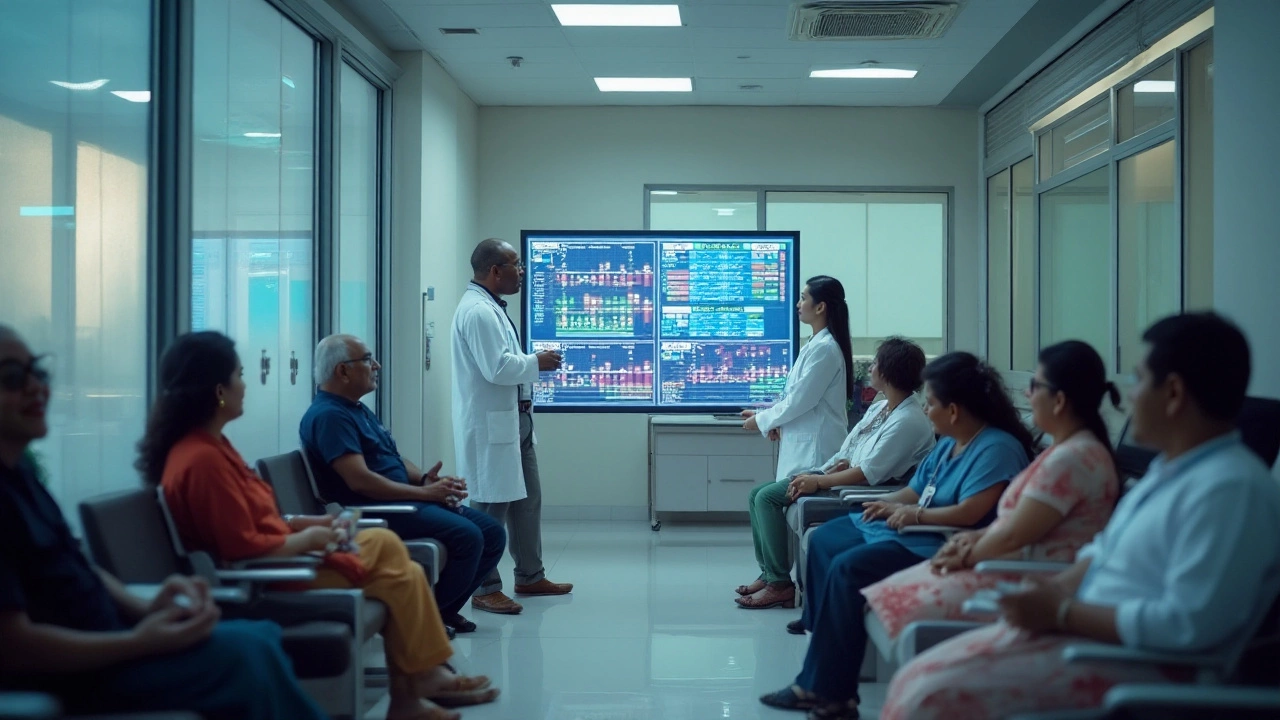Undetected Cancer Survival: How Long Can You Live Without Knowing?
- Oct, 3 2025
- 0
Explore how long cancers can stay hidden, factors that affect silent growth, real‑world timelines, and practical steps to catch cancer early for better survival.
When thinking about cancer screening, a set of medical tests aimed at finding cancer before symptoms appear. Also known as early detection, it helps catch disease at a stage when treatment is most effective. In simple terms, early detection, the practice of identifying disease in its pre‑clinical phase is the backbone of any screening program. Because catching cancer early can dramatically improve survival rates, health systems worldwide have built guidelines around it.
Screening encompasses a handful of well‑studied tests that target the most common cancers. Mammography, X‑ray imaging of breast tissue used to spot tumors early has lowered breast cancer mortality by up to 30% in many countries. Colonoscopy, a visual exam of the colon to find polyps and early‑stage colorectal cancer can both diagnose and prevent cancer when polyps are removed. For men, the PSA test, a blood test measuring prostate‑specific antigen helps detect prostate issues, though it’s paired with risk‑assessment tools to avoid over‑diagnosis. These examples show that screening requires the right test for the right risk group.
Guidelines from bodies like the WHO and national cancer institutes influence who gets screened, how often, and which test to use. For instance, women aged 50‑74 are typically advised to get a mammogram every two years, while adults over 45 may benefit from a colonoscopy every ten years. Such recommendations shape public‑health campaigns and insurance coverage, ensuring that resources target high‑risk populations.
Beyond the big three, emerging biomarkers are adding nuance to screening. Blood‑based tests that detect circulating tumor DNA, for example, are being studied for lung and ovarian cancers. These biomarkers, molecular signals that indicate the presence of disease could eventually complement imaging, offering less invasive options. However, they still need validation before becoming routine parts of screening protocols.
Choosing the right screening schedule also means considering personal risk factors—family history, lifestyle, and existing health conditions. A smoker with a history of chronic bronchitis, for instance, may qualify for low‑dose CT scans to catch lung cancer early, while a person with a strong family history of breast cancer might start mammograms before the typical age. Your doctor will weigh these factors against the potential harms of false positives and unnecessary procedures.
Practical tips to make screening work for you: keep a record of past tests, know the recommended intervals for each test, and stay informed about any updates to guidelines. Many health portals now offer reminder services, and some insurers cover annual check‑ups that include basic screening panels. Being proactive and asking the right questions at your appointments can turn a vague recommendation into a clear action plan.
Below you’ll find a curated set of articles that dive deeper into specific screening methods, discuss the latest research on biomarkers, and share real‑world advice on navigating insurance and appointments. Whether you’re setting up your first screening or updating an existing regimen, the resources ahead will give you the facts you need to make confident health choices.

Explore how long cancers can stay hidden, factors that affect silent growth, real‑world timelines, and practical steps to catch cancer early for better survival.

Blood tests are a common way to detect many cancers, but some types may not show up in routine screenings. Knowing which cancers might slip through traditional blood work can help in understanding the need for additional tests. This knowledge empowers individuals to seek out comprehensive diagnostic approaches. Learn about specific cancers that go undetected and explore ways to achieve accurate diagnoses.